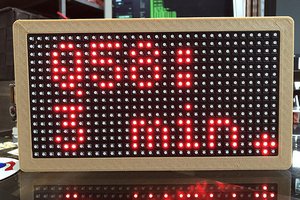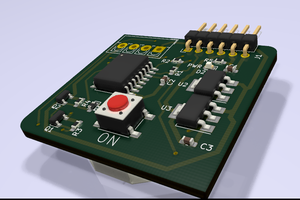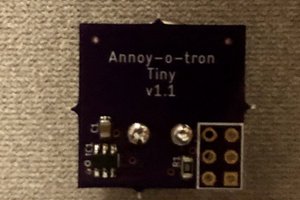As usual, laziness spurs innovation.
It is fall going on winter here and the heater kicked in for the first time the other day and of course with all the dust over the summer landing in them, cause at least one smoke detector to go off. But which one. We have a bunch of them all over the house.
It occurred to me that sticking an 8266 in with each one of them would allow it to report into a master server and keep a web page updated. With a bit of cleverness, you could also make sure that the units have good batteries in them and are "on".
The idea of interfacing the smoke detector to the 8266 seems simple but there are a couple little hickups. The first is that the detector runs off a 9V battery and the 8266 runs off 3.3V. I am a big fan of the little buck regulators you can get for under a buck a pop and they are very efficient but still, I suspect the quiescent current is considerably more than the sleep current from the 8266, I think I have a clever way to keep this efficient.
I think the trick is in using one of the two i/o pins to turn a fet on to charge a small super cap that stores enough of a charge to keep the 8266 ticking when it is asleep. I would have the 8266 wake up between every 15 minutes and hour to check in. When the 8266 wakes up, it turns the fet on, that turns on the buck converter so we have lots of power for the radio, and after the check in, turns the radio off, waits a second so the buck converter can fully charge the cap, and goes back to sleep. On the remote end, there could be some system to alarm if a check in is missed. This would be from something like a dead battery or the battery being removed. This would be really handy in something like a rental apartment.
The other i/o pin on the 8266 would be driven by an opto coupler that connects to the beeper on the smoke detector, This would also go to the wake up pin on the 8266 via a diode, If the alarm goes off, the 8266 wakes up, starts the power supply so it is not running off the cap, sees the alarm pin is set, and sends the alarm over wifi as well as allowing the beeper in the alarm to beep. Some RC filtering may be necessary on the alarm i/o pin to let it see the whole event and not each cycle of the beep and each cadence of the beeper. When the RC finally drops enough to let the pin fall, the 8266 broadcasts an all clear, turns the radio off, waits a second for the cap to get a good charge, turns the dc-dc converter off and goes back to sleep.
Big Q, does anybody sell the cheapo 8266-01 that has the pins brought out to pads to allow them to sleep? It seems drop dead stupid no one has done this if they have not.. It is after 2AM so something to check out on another day...
 matthewkleinmann
matthewkleinmann
 klinstifen
klinstifen
 Taiwo
Taiwo
 Nick Sayer
Nick Sayer
 Capt. Flatus O'Flaherty ☠
Capt. Flatus O'Flaherty ☠